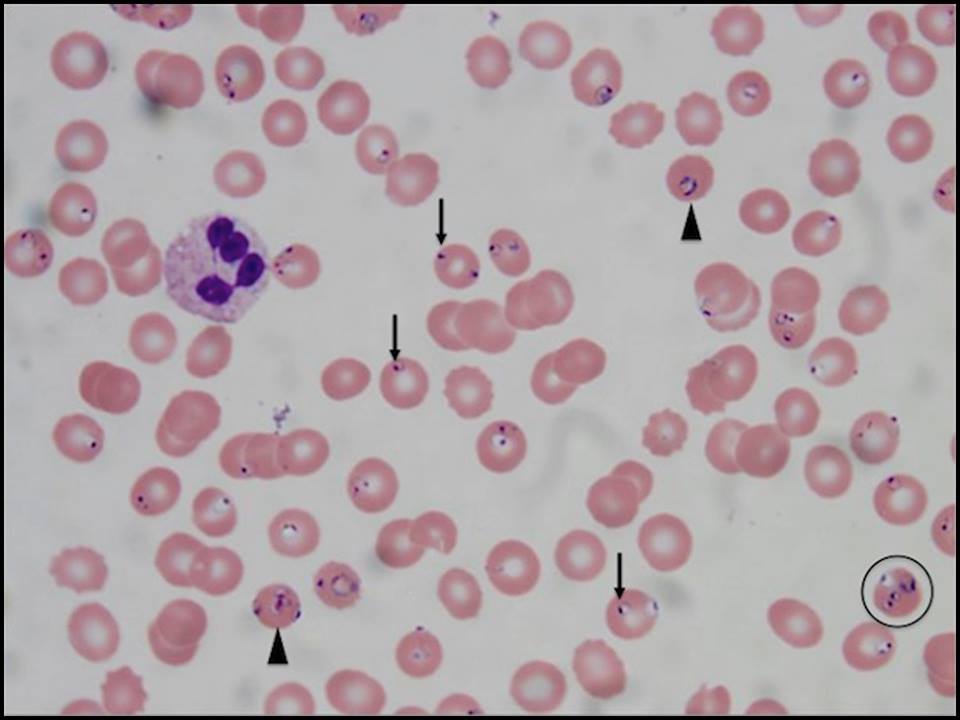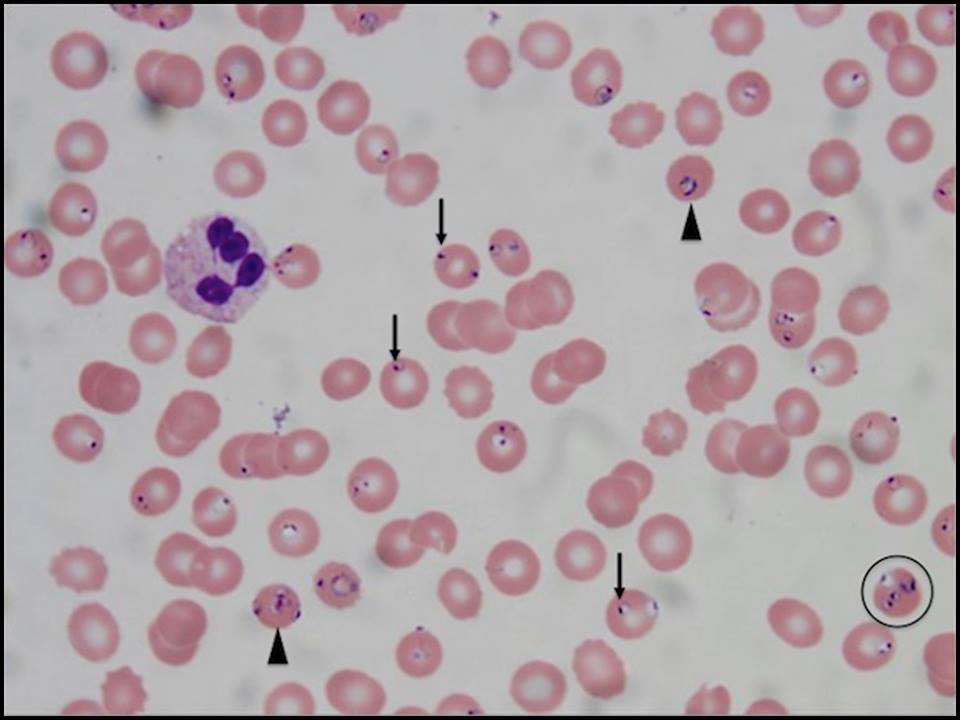ความคิดเห็นทั้งหมด : 5
หญิงอายุ 57 ปี มีไข้ 1 สัปดาห์ และชักก่อนมารพ. หญิงอายุ 57 ปี ถูกส่งตัวมาโรงพยาบาลเนื่องจากชักในงานเลี้ยง. 1 สัปดาห์ก่อน ผู้ป่วยเริ่มมีอาการปวดเมื่อยตัว ปวดหัว เบื่ออาหาร และมีไข้เป็นๆ หายๆ. ผุ้ป่วยไม่มีโรคประจำตัวใดๆ ไม่ได้กินยาใดๆ . ผู้ป่วยสูบบุหรี่ประจำ ดื่มเมื่อเข้าสังคม แต่ไม่ได้ใช้ยาเสพติดใดๆ. ที่โรงพยาบาล ผู้ป่วยยังไม่ค่อยรู้ตัว เสื้อผ้าของผู้ป่วยเปื้อนปัสสาวะ PE: T 38.4°C, tachycardic, disoriented and appeared ill. Labs: CBC: Hb 7.7 g%, WBC 6,300/cu mm, Platelet 8,000/cu mm, Glucose 77, BUN 100, Cr 4.74, Na 117, T CO2 18, TB 1.7, SGOT 64, SGPT 86, ALP 167, Peripheral blood smear ดังในรูป -การวินิจฉัยคืออะไร Posted by : cpantip , E-mail : (chpantip@gmail.com) , Date : 2016-05-23 , Time : 10:18:56 , From IP : 172.29.3.57 |
